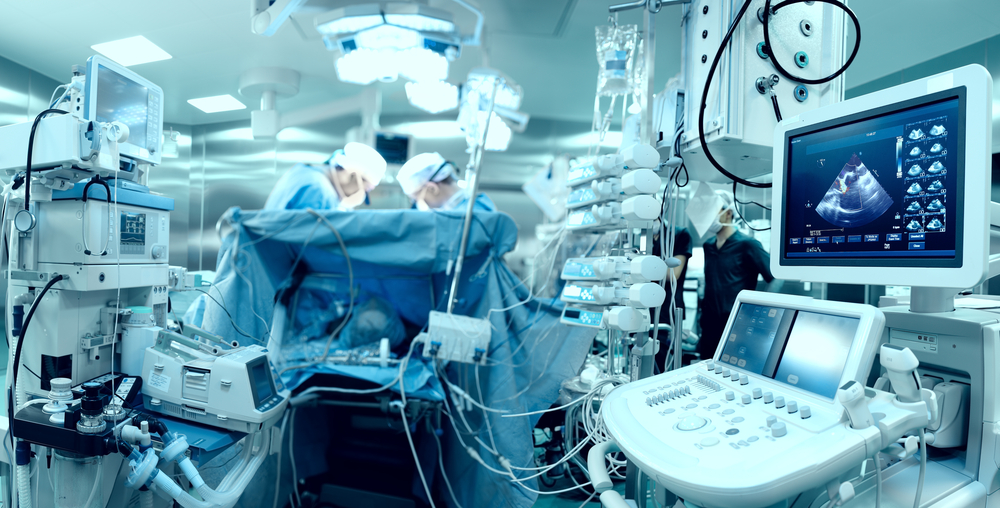Traditional ultrasound is a cornerstone in diagnostic and procedural medicine. But its application comes with a unique set of challenges, particularly in neuraxial procedures, where precision is nonnegotiable. From the steep learning curves associated with image interpretation to the variability of challenging anatomies, clinicians often find themselves in high-pressure situations.
Enter RIVANNA’s Accuro Neuraxial Guidance tool: a clinically proven solution designed to redefine the standards of care. This advanced system not only makes ultrasound more accessible and manageable; it also fits comfortably within capital budget thresholds. It’s a much-needed modern solution for overcoming the challenges of traditional ultrasound.
The challenges of traditional ultrasound
Historically, medical professionals have leaned heavily on traditional ultrasound techniques for a range of diagnostic and procedural applications. Yet clinicians often find it difficult to obtain ultrasound’s insights. The struggle includes:
- Training requirements: Neuraxial ultrasound necessitates a comprehensive grasp of spinal anatomy. Anesthesiologists must learn to identify the subtle differences between tissues, ligaments, and spaces within the spinal region, which can look similar on ultrasound. This skill isn’t quickly acquired — it requires dedicated training and practice to achieve acceptable success rates. In facilities where expert trainers are scarce, this becomes a significant barrier, limiting the technique’s adoption and potentially compromising patient care.
- High skill variability: The precision of neuraxial anesthesia relies on the anesthesiologist’s ability to maneuver the ultrasound probe with dexterity to capture the best possible image of the spine and to interpret these images accurately. Practitioners without this finely tuned skill set can struggle, leading to varying levels of success in the administration of neuraxial blocks. This variability directly affects procedural outcomes and patient safety, making consistent training and assessments essential.
- Suboptimal bone visualization: Traditional ultrasound machines fall short in providing clear images of bony structures. For neuraxial procedures, where it is critical to visualize bony landmarks of the spine for accurate needle placement, this limitation can be a significant blocker. The echogenicity of bone often results in poor image resolution, making it challenging to pinpoint the exact injection site. This can lead to misplaced needles, inadequate anesthesia, and the potential for nerve damage or other serious complications.
These challenges are particularly pronounced in patients with complex anatomies — such as those who are obese or have scoliosis — and determining where to administer neuraxial anesthesia is difficult. Inaccuracies can lead to significant complications, highlighting the need for more reliable, user-friendly solutions.

Accuro makes ultrasound easy and accessible
While many hospitals and healthcare facilities are already invested in traditional ultrasound, they may not be seeing the ROI they could on this equipment if it’s sitting idle or, worse, if clinicians find it inaccessible or inefficient. Ultimately, of course, patients suffer. Prioritizing better patient care (and better ROI) may require investing in RIVANNA’s Accuro Neuraxial Guidance tool, an ultrasound-based imaging solution for spinal and epidural anesthesia.
This clinically proven solution applies to a variety of neuraxial ultrasound and anesthesia challenges, but ease of use sets Accuro apart. Accuro’s automated features, its enhanced imaging capabilities, and its design that requires minimal user experience democratizes ultrasound.
While the last thing most healthcare organizations want to do is invest in yet another medical device, Accuro respects the financial constraints of medical settings. It represents a cost-effective solution without compromising on technological sophistication. More importantly, healthcare organizations can bring Accuro into their facilities for a cost that’s under capital budget thresholds.

Help when clinicians need it most
Ease of use typically invites greater utilization, and Accuro proves its worth as a “rescue” tool in real-world medical scenarios. Specifically, it can provide critical support to clinicians in settings where a skilled diagnostician isn’t available.
In these situations, Accuro stands out for its reliability and ease of access, which offer psychological comfort to healthcare professionals who might feel nervous about ultrasound technology. Knowing they have a dependable tool at their fingertips, clinicians can approach complex cases with increased confidence, ultimately enhancing patient safety and care quality.
These benefits even extend to complex neuraxial imaging. In fact, Accuro is proven to automatically identify epidural location with success rates exceeding 94%. By increasing first-attempt success rates, decreasing needle passes, and reducing placement times, Accuro elevates the patient experience by alleviating uncertainties. A confident clinician and a satisfied patient position the Accuro as an investment worth making — especially in contrast to the alternative.

An ultrasound solution worth the investment
In pursuit of excellence in patient care, healthcare organizations must weigh the returns of improved clinical outcomes, patient satisfaction, and procedural efficiency against the cost of innovative technology. Accuro makes the cost/benefit analysis simple.
By lifting the barriers of traditional ultrasound, Accuro enhances ultrasound results in every setting. But in difficult medical circumstances — marked by labor shortages, complex anatomies, and inconsistent clinician skill sets — Accuro makes a crucial difference in patient outcomes.
